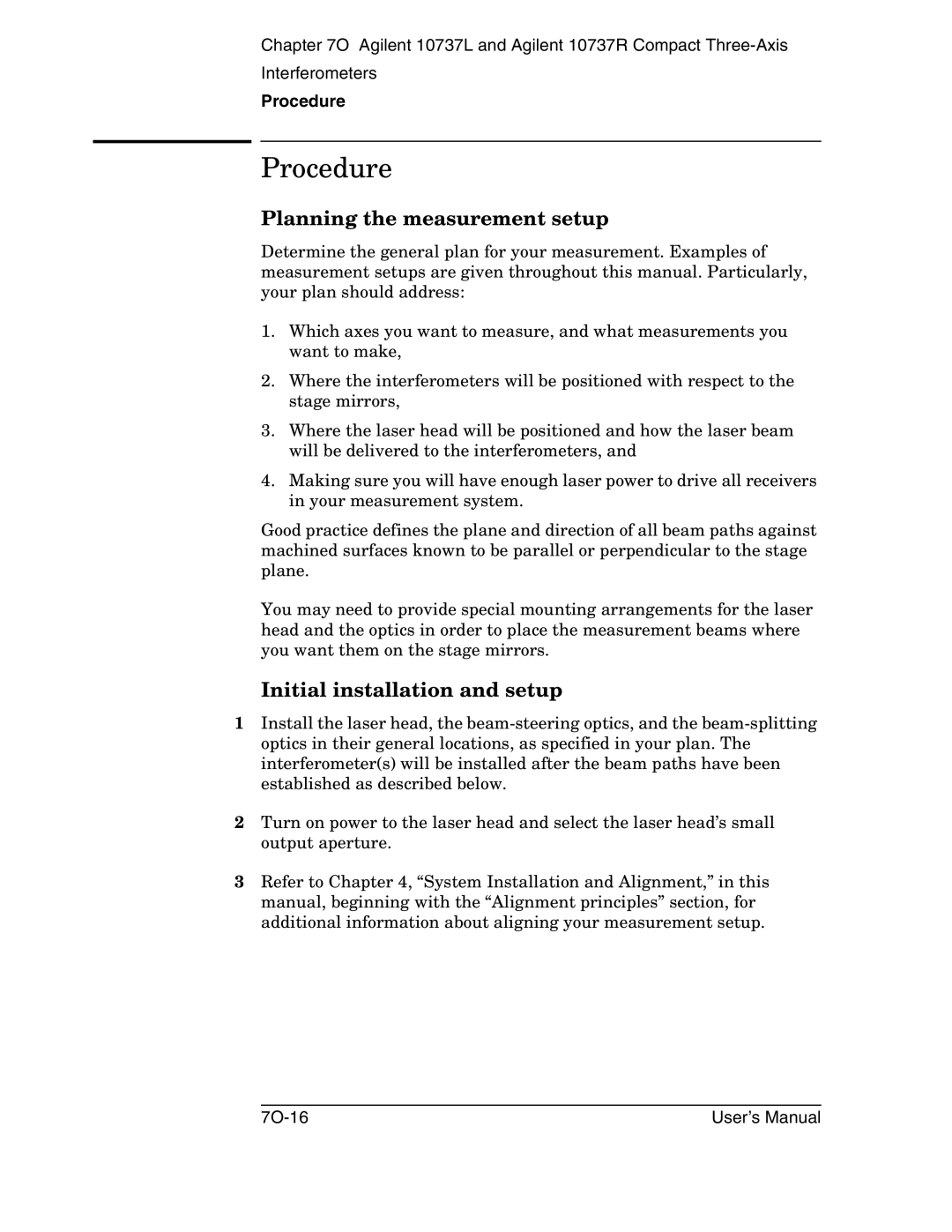10737L, 10737R specifications
Agilent Technologies has long been a leader in providing advanced solutions for testing and measurement in the fields of electronics and telecommunications. Among their suite of precision components, the Agilent 10737R and 10737L stand out as powerful instruments engineered for high-performance applications in the field of RF and microwave testing.The Agilent 10737R is designed with a focus on accuracy and reliability, particularly in the realm of vector network analysis. This model integrates exceptionally low insertion loss and high dynamic range, which makes it an ideal choice for applications requiring meticulous measurement capabilities. The 10737R boasts a frequency range extending from 0.1 to 40 GHz, enabling engineers to perform accurate assessments on a wide variety of microwave components. A key feature of this model is its advanced calibration technique, which helps ensure precision and linearity in measurements, critical for modern measurement tasks.
Conversely, the Agilent 10737L model is tailored for a slightly different focus, providing specialized capabilities for a spectrum of RF applications. This model emphasizes enhanced measurement speed without compromising accuracy, making it suitable for production test environments. With a frequency range stretching from 0.1 to 30 GHz, the 10737L incorporates state-of-the-art technology to reduce measurement uncertainties and improve overall testing throughput. Its robustness and durability ensure reliable performance across various testing scenarios.
Both 10737 models are equipped with sophisticated digital signal processing technology, which enables real-time data analysis and interpretation. Users can take advantage of high-resolution display features that allow for easy interpretation of results and efficient data management. The interface is designed to facilitate seamless integration with other Agilent test instruments, enhancing compatibility and operational flexibility.
In terms of characteristics, both models provide excellent temperature stability and minimal drift, which are crucial for long-term testing applications. They are constructed to withstand the rigors of a laboratory environment while maintaining precise performance over their operational life.
Overall, the Agilent 10737R and 10737L are indispensable tools for engineers in need of advanced measurement solutions in RF and microwave technology. Their unique features, enhanced measurement capabilities, and high reliability make them a valuable investment for professionals focused on pushing the boundaries of electronic testing and validation.

